The No-Fluff LinkedIn Ads Playbook
Launch, test, and scale LinkedIn ads profitably in 12 weeks
I often get asked about LinkedIn ads as a GTM motion. For help, I turned to Karola Karlson, growth strategist and author of Marketing Fix newsletter & blog. Over the past 10 years, Karola has built the global marketing team at Bolt, advised 50+ brands on growth, and managed 6-figure Meta and LinkedIn campaigns. Check out her free Figma library with 155+ LinkedIn ad examples.
In this article, Karola will cover:
The right timing to consider LinkedIn ads
B2B brands running 5,000+ ad creatives on LinkedIn
The 12-week experiment to go from 0 to positive ROAS
Creative strategies for top- and bottom-of-funnel ads
Screenshots of exceptional B2B ads for inspiration
Recently, a London-based software company’s CMO asked me whether they should run LinkedIn ads.
Instead of a clear answer, my brain produced a Huel metaphor. (Yes, that Huel, the nutritionally complete drink that – you’d be surprised to find out – even normal people genuinely like.)
If you read a few Reddit threads on Huel, you’ll learn that people use it differently.
Some drink four Black Edition shakes per day. While others consume a bottle 1-2 days per week when they don’t have time for a real meal.
LinkedIn Ads, like Huel, work best if you use them to complement your other acquisition channels, be it for customers or nutrients.
As Maja wrote in her brilliant article on GTM motions, most companies discover that focusing on 2-3 growth motions is the sweet spot.
While bigger companies can run all these GTM playbooks simultaneously, smaller companies have to concentrate their much more limited resources on 1-3 motions before moving to the next one.
There's no one-size-fits-all package of GTM motions, as this chart will show.
Here are some fast-growth B2B brands bidding on LinkedIn ads.
Based on the level of creative variety and scale, it’s fairly safe to assume that paid social is an integral part of their growth strategy.
Looking at the chart, note how the strategy and offers vary based on product type, ICP profile, and company size.
Also, note how many of these leading B2B brands have an insane number of ads in their LinkedIn Ad Library.
If Canva is running 6,000+ LinkedIn ad creatives, the channel must work really well for them. Right?
Right…
In my experience, LinkedIn ads are never The Channel with the highest ROI and lead/revenue acquisition volume.
However, allocating some of your budget (and time) on LinkedIn ads can be worthwhile if you’re looking to scale your existing acquisition channels, i.e. GTM motions.
The key to getting positive ROAS out of LinkedIn ads is approaching the channel strategically. Don’t throw in your dollars to just watch them burn.
Are LinkedIn ads the right GTM motion for you?
If you’re intrigued by the idea of testing LinkedIn ads, but unsure whether the channel is worth the investment, consider these three questions.
1. Have you validated your product-market fit?
In other words: Are you 100% sure that people need – and are willing to pay for – your product?
Have you validated your ICP (ideal customer profile), tested outbound sales, and converted leads into paying customers?
If the answer is no, there are cheaper and more pragmatic ways to work on your product-market fit than a paid ads channel with the average CPC (cost per click) of $15 - $100.
2. How will LinkedIn ads fit into your existing acquisition funnel?
Based on my 10+ years of experience working with SaaS companies, LinkedIn ads work best when targeted at audiences in…
Awareness + demand generation stage
End-of-funnel + deal closing stage
I’ll expand on my go-to creative strategies for both stages later in this article.
For now, I suggest that you draw a quick napkin sketch of your conversion funnel, from awareness to prospecting to the actual revenue. Include your marketing and sales tactics for each stage.
Keeping in mind Maja’s wise words, “Invest in compounding channels,” ask yourself:
How do LinkedIn ads fit into your existing acquisition matrix?
One thing that you certainly don’t want to happen is relying solely on paid acquisition for lead generation and revenue growth.
We’re no longer in 2010, the heyday of cheap social ads when it could be a high-ROI growth channel.
Sad, yes, but true.
3. What is the goal of your LinkedIn ad campaigns?
Here are two additional questions to ask yourself, vis-à-vis investing in a LinkedIn ads experiment.
Do you need an extra channel for boosting your early-funnel leads?
This could mean adding more cold prospects into your Enterprise-level sales funnel, or free trial users/subscribers if you target SMBs (small and medium-sized businesses).
But first, I suggest maxing out on scaling your existing acquisition channels.
Achieve excellence in 1-2 channels, rather than working on 5+ channels with limited resources.
Have you reached the peak with your highest-ROI channels, both free (e.g. LinkedIn organic marketing) and paid (e.g. Google Search ads)?
If yes, it might be the right time to test LinkedIn ads.
Do you need additional brand touchpoints to convert prospects into deals?
Adding extra touchpoints to the pre-deal stage can help your sales team close more deals faster.
For example, thought leadership and customer testimonial ads help to build trust and elevate brand perception.
Consider running LinkedIn ads to complement your other acquisition activities, such as AI-powered sales, organic LinkedIn, newsletters, automated emails, etc.
TL;DR: Should I launch LinkedIn ad campaigns?
Sometimes, if you can’t know for sure, the best thing to do is run an experiment.
However, paid ad campaigns won’t fix a bad product.
If you’ve got a solid product-market fit and believe that LinkedIn ads would complement your existing marketing channels, give it a go.
OK, I want to try LinkedIn ads. What’s next?
Before you inaugurate LinkedIn ads into your ongoing marketing mix, I suggest that you approach it as a 3-month experiment.
Why three months, in particular?
For one, it’s unlikely that you’ll see positive ROAS in the first week.
The 12-week time period will give you enough time to experiment with different campaign optimisations, target audiences, and creative strategies.
It’s also a long enough period to demand a solid strategy – and a budget that should make you reluctant to say: “Let’s throw spaghetti on the wall and see what sticks.”
When running LinkedIn ad experiments for my B2B clients, I focus on creative experiments first.
Why?
On LinkedIn, just like on Facebook and Instagram, your ad creatives are the key element that either makes or breaks your campaign.
I would go as far as to say that ad creatives contribute 80% of paid social campaigns’ performance.
The other key factors include campaign setup, audience targeting, delivery optimisation, landing page and product/sales conversions.
But I’m getting ahead of myself!
In what follows, I’ll share my blueprint and suggestions for running your first ad campaign experiment on LinkedIn.
Creating your LinkedIn ad experiment strategy
In a nutshell, here are 8 steps to launching your LinkedIn ads experiment:
Define your goals and KPIs.
Set your experiment’s timeframe and budget.
Decide on experimentation frequency.
Document & prioritise experiment ideas.
Create your reporting & learnings document.
Set up LinkedIn Insight Tag and conversions.
Create your campaign drafts and audiences.
Design your first ad creatives & launch the campaign.
I will comment briefly on each point, with an extra focus on campaign structure and creative best practices.
Step 1: Define your goals and KPIs
You know it already, but I’ll nonetheless say it: Every marketing experiment needs clear goals that are reflected in specific KPIs.
Are you looking to get more leads, convert existing prospects, or move the needle elsewhere in your funnel?
Knowing your goal(s), you can choose the right campaign objective, optimise on relevant conversions, and evaluate your campaign performance and ROAS.
Step 2: Set your experiment’s timeframe and budget
Think about your budget as an equation.
How many results do you want to get out of the experiment?
What are your marketing funnel conversion rates? Ad click > landing page > conversion to lead or customer
What CAC (cost of conversion) are you looking to reach?
What ad campaign budget do you need to get X results at Y CAC?
Let’s see the calculation in practice.
How many results do you want to get out of the experiment? – 200 demo call signups
What are your expected marketing funnel conversion rates? Ad click > 15% > landing page > 22% > demo call signup
What CAC (cost of acquisition) are you looking to reach? – $100 per demo call signup
What ad campaign budget do you need to get X results at Y CAC? – 200 x $100 = $20,000
To get 200 results at $100 CAC, your total budget for the experiment is $20,000.
This is the ideal scenario of working with a single KPI that’s easy to track and attribute. But even when working with an incremental uplift, consider how you’re going to measure success – and how much the experiment will cost.
One frequent mistake that I see B2B brands make is running a 1-week LinkedIn ad campaign with < $500 budget and concluding the channel doesn’t work.
You’ve got to test, test, test to make LinkedIn ads work.
Step 3: Decide on experimentation frequency
The more you experiment with your ad creatives, the more different audiences you will attract and convert. (Yes, the more spaghetti will stick.)
I recommend launching new ad creatives (with varied design and USPs) weekly over the first 6 weeks of your experiment.
After that, you can keep the top-performing creatives and experiment with audiences and campaign types.
Suggested LinkedIn campaign experiment schedule:
Set up and launch the new experiment(s) every Monday
Pause and report on the previous experiment (Monday)
Select & communicate the next idea to experiment with (Monday)
Work on the next experiment’s preparations (Monday-Friday)
Step 4: Document & prioritise experiment ideas
This one’s too obvious to explain.
So, to give you a ginger shot of inspiration, here’s a screenshot of the experiment planning sheet that I created for my B2B ad creatives course participants.
Step 5: Create your reporting & learnings document
Another obvious recommendation, and yet one that so many marketers ignore.
Whenever you conclude a creative experiment, report on all variations’ results.
If you’ve ever run Meta or LinkedIn ads, you know what a struggle it is to go back to the Ads Manager and flick between past campaigns to understand which creative directions and messaging worked best.
I’ve tested (too) many different versions of ad creative reporting over the years, plus some tools.
This Google Spreadsheet report layout is by far the best I have found.
Add each new creative experiment on a new row on top of the document.
Over time, it will give you an immediate overview of every creative you’ve tested, plus a comparison of the best and worst-performing creatives.
It is easy to fill in, streamlined, and can be conveniently navigated.
Step 6: Set up LinkedIn Insight Tag and conversions
If you’re not tracking the conversions from a marketing channel, you can’t assess its efficiency.
Simple logic – and in the case of most LinkedIn ad experiments, also a simple setup.
I found this chart about attribution methods, shared in a recent Growth Unhinged newsletter, a good illustration of various tracking options.

For LinkedIn ads, I recommend that you…
Set up the LinkedIn Tag on your website and in product, with all the relevant conversion events from lead to client stage.
Use UTM tags in all your campaigns to have an internal click-based attribution model.
If you run awareness or end-of-funnel campaigns, define the uplift attribution model before launching your campaigns.
By this point, there remain two topics to discuss:
Step 7: Create your campaign drafts and audiences
Step 8: Design your first ad creatives & launch the campaign
Luckily, I happen to know that the readers of GTM Strategist appreciate a good old long-form article.
So I’ll expand on both, sharing some pointers for campaign setup and ad creatives.
My go-to campaign structure for LinkedIn ad experiments
The number one mistake that brands make when experimenting is to create a new ad campaign whenever launching a new test.
Number two is testing too many things at once.
Here’s a great illustration by ConversionXL, showing what will happen if you try to test too much stuff at once.
Begin with one experiment campaign with a single ad set
I like to keep all experimentation inside a single ad set until it delivers positive ROAS.
If you take my advice and begin by testing ad creatives:
1. Upload 5-6 new ad creatives into your test campaign (the same ad set) every week.
2. Pause all past week’s creatives once you’ve set your new creatives live.
Yes, you must pause the past week’s top-performing ads. Otherwise, the algorithms will keep preferring them to the newcomers.
Also, by starting basically from zero with a fresh set of creatives, you’re forcing the algorithms to adjust the audience that sees your ads. This in itself can lead to higher ROAS.
Why only 1 ad set with 5-6 ad creatives?
You may ask: Why create only one ad set with all the tested ad creatives, like this?
Instead of a setup where you have separate ad sets for each ad creative.
The reason for this is simple…
If you place every ad variation in a separate ad set, the algorithms will treat each ad set as a different entity.
Each ad creative will optimise for a slightly different target audience, because targeting works on the ad set level.
Also, by splitting each ad creative into a separate ad set, you will dilute the budget spend.
With 5 ad creatives, each ad set will spend 20% of the experiment budget.
Instead of giving the new top-performing ad creatives more budget, each tested variation will spend the same amount.
This leads to fewer results as the low-performing ads (and ad sets) attract and convert fewer potential customers.
For the same reason, I never use LinkedIn’s A/B testing features.
Found a strategy that works? Split your main & experiment campaign
After you’ve found the recipe that works, you can split your experiment campaign from the main campaign.
One ongoing ad campaign, 90% of your budget
Separate experiment campaign, ca 10% of your budget
NB! Separate campaign groups for every target market / ICP.
If you work with several target audiences (ICPs – ideal customer profiles) or want to run experiments on multiple markets, create a separate campaign group for each.
This will allow you to control per-country and per-audience ad spend, and to upload localised creatives.
Alternatively, you can just run your experiment in one target market or on one ICP.
Got lots of target markets?
Experiment with new ad creatives and other campaign elements in your primary target market with the highest ad spend first.
After concluding the experiment, apply the discoveries to your other markets.
The foolproof LinkedIn ad campaign setup
As you might expect from a big social media platform, LinkedIn offers lots of different campaign setup options and automations.
But all that glitters is not gold, and sometimes (always), a simple no-fuzz setup will lead to the best results. (Read: the highest ROAS.)
➡️ Select a conversion-led campaign objective
Option 1: Advertise for conversions, bid on conversions.
If you’re looking to increase conversions (leads and customers) with your LinkedIn campaign, choose the corresponding objective: “Website conversions.”
Option 2: Advertise for conversions, bid on clicks.
To place a maximum CPC bid, select the “Website visits” objective.
However, do not evaluate your LinkedIn ad campaign's success by its CPC. In the end, what matters is new revenue, i.e. conversions.
Option 3: Advertise for leads, bid on leads.
Last but not least, the “Lead generation” objective will allow you to run LinkedIn Lead ads.
It’s the ad format where a prospect shares their email and other information in exchange for your promoted guide or industry report.
Lead Ads can work well if you’ve got a sales team to move the leads further down your acquisition funnel.
➡️ Use manual bidding with a cost-per-result cap
LinkedIn CPC is expensive. I’ve seen the suggested bid go up to $90.
Start with manual bidding to cap the cost per click.
Place the initial bid at a 50% lower rate than what LinkedIn recommends. Every 24-48 hours, increase your bid by 10% until your campaign reaches the full daily spend.
➡️ Target a niche audience based on job roles
Contrary to Meta advertising, where you target a broad audience of 1M+ people and let the algorithms optimise your campaign delivery, on LinkedIn you want a narrow audience of 10-50k people.
You can expand the audience later, as your ad frequency and budgets scale.
Create your target audience based on job roles and seniority, and avoid automatic audience expansion:
Don’t target the audience network.
Don’t use audience expansion.
➡️ Reverse exclude audiences
I found this hack by going down the Reddit rabbit hole. And it’s proven to work well.
Problem: About 50% of LinkedIn users aren’t attached to a company page, so if you target companies with x number of employees, it’s not 100% accurate.
Solution: If you want to target smaller companies, apply the reverse targeting method.
Example: Instead of targeting companies with 1-50 employees, exclude anyone in companies with 51 or more employees. And vice versa.
You can also exclude sales, business development, and marketing roles to reach more decision-makers.
And don’t forget to exclude your existing customers and leads, unless you want to reach them.
➡️ Opt out of LinkedIn Audience Network
You’re paying a premium price to be advertising on LinkedIn, so you wouldn’t want to pay for clicks that happen elsewhere.
Exclude the Audience Network from your campaign placements.
➡️ Start with Sponsored Content Ads
LinkedIn offers several different ad formats, each of which appears in a different placement on the platform.
If you’re in the stage of verifying whether a paid channel works for you, opt for the most popular campaign type. On LinkedIn, this means Sponsored Content ads.
Sponsored Content Ads are the in-feed ads that appear in your LinkedIn feed, next to non-sponsored posts. Variations include single-image, video, carousel, and lead ads.
On top of that, you can run Follower Ads, Dynamic Ads, Job Ads, Message Ads, Text Ads, and more. These ads appear in non-feed placements, e.g. the area right to the main feed and your InMail inbox.
Here’s a Dynamic Text Ad by LinkedIn itself that targets me.
The Dynamic Text ads are worth testing, albeit not as your primary ad format.
They’re almost free to run if you optimise for clicks. No one really clicks, but you can get your logo in front of your ICP. And this, in the long run, can make them subconsciously more receptive to your sales pitches and in-feed ads.
The Message Ads that appear in LinkedIn inboxes remain the greatest mystery to me. Why pay for InMail ads (that people hate) if you can simply do high-quality, personalised outbound outreach? If you know the answer, do tell!
How to fail-proof your first LinkedIn ad creatives
In a recent blog article, I wrote about LinkedIn ad mistakes… Made by LinkedIn itself.
Here’s a quick overview of the mistakes I identified:
Boring ad image layout
Missing call-to-action button
No illustration of the product or benefit
Eclectic colour scheme
Generic stock photos
Overcrowding ad image with text
Impractical information overload
Hidden or missing value proposition
Tiny product screenshots
No bold headline in ad image
My bet is that if LinkedIn’s paid advertising team fixed these blunders, their ROAS would improve 2x or more.
But unlike LinkedIn’s paid advertising team, you don’t have an unlimited budget to waste.
You need the results now.
Fortunately, there are hundreds of B2B advertisers nailing the LinkedIn ad creative.
I’ve collected 155+ screenshots of excellent LinkedIn ads in a Figma Library. Get it here, gather inspiration, and copy the best.
But before you go, read the last part of this article to learn the best practices for top-of-funnel and bottom-of-funnel LinkedIn ad campaign creatives.
LinkedIn ad formats & layouts for top-of-funnel campaigns
In the early-funnel stage, your LinkedIn ads should focus on one or more of these four objectives:
Inform your ICP about the benefits (USP) of your product
Establish your brand as an industry thought leader / leading provider
Build positive brand perception by sharing high-quality content
Feed new leads into your marketing or sales funnel (lead ads)
Begin by experimenting with single-image ads with one USP.
Launch ads with 1-3 of your primary USPs within a single ad layout. You can experiment with the wording of your USPs as well.
Do not mix messaging and layout tests for you won’t be able to tell which element (message or layout) worked.
Remember the BBB rule: high-contrast Background, Bold headline, single Benefit.
I’m a big proponent of using number-led USPs on ad creatives.
A big bold number pops out in the crowded feed and, like a picture, tells more than a thousand words.
Once you’ve found 2-3 well-performing messaging angles, begin experimenting with your ad image’s layout and colours.
Avoid generic stock images and overwhelming screenshots of your product dashboard.
Instead, simplify your product features and make the non-text parts of your ad to communicate a story as well.
Once you’ve had some success with single-image ads, diversify your creative strategy.
Test video ads in collaboration with content creators, customer testimonials, and product introductions.
Advertise your team members’ organic posts with a high reach and engagement.
Run carousel ads that communicate your product USPs, showcase customer testimonials, or share valuable advice.
There are so many different creative directions to test…
Just spy on your favourite B2B brands in the LinkedIn Ad Library for infinite inspiration.
If you’re just getting started with LinkedIn ads, be wary of much creativity.
The foolproof way to reach positive ROAS is to avoid hyper-creative ideas, e.g. memes and riddled copy.
Value first, fun later.
LinkedIn ad formats & layouts for bottom-of-funnel campaigns
In the mid- and late-funnel stages, your LinkedIn campaigns’ focus will change.
Now, your creative strategy should stem from the question: how to support the conversion of leads to customers.
Down the funnel, your ad creatives should become more oriented on trust and proof points.
It’s best not to mix your top-of-funnel and bottom-of-funnel ad creatives.
So set up a separate retargeting campaign for lead nurturing.
In your retargeting campaign, test ad creatives that feature:
Customer testimonials and client logos
Customer ratings on review sites
Case studies with numbers
Media coverage about your brand
High-quality industry reports
Webinar & conference invitations
Update your ad campaign’s ad creatives at least every two weeks.
Even a simple change like a new colour scheme can draw additional people’s attention.
To sum up, LinkedIn ads can make a meaningful contribution to your GTM strategy, both in Awareness and Conversion stage.
Getting positive ROI out of this high-expense channel is contingent on the right timing, commitment to strategy, and relentless creative experimentation.
If you’ve got additional questions, or want to discuss a point I’ve made, find me on LinkedIn and Marketing Fix blog.
Additional resources:
Advanced B2B ad creatives course by Karola (Get 20% off with GTMSTRATEGIST code)
📘 New to GTM? Learn fundamentals. Get my best-selling GTM Strategist book that helped 9,500+ companies to go to market with confidence - frameworks and online course included.
✅ Need ready-to-use GTM assets and AI prompts? Get the 100-Step GTM Checklist with proven website templates, sales decks, landing pages, outbound sequences, LinkedIn post frameworks, email sequences, and 20+ workshops you can immediately run with your team.
🏅 Are you in charge of GTM and responsible for leading others? Grab the GTM Masterclass (6 hours of training, end-to-end GTM explained on examples, guided workshops) to get your team up and running in no time.
🤝 Want to work together? ⏩ Check out the options and let me know how we can join forces.





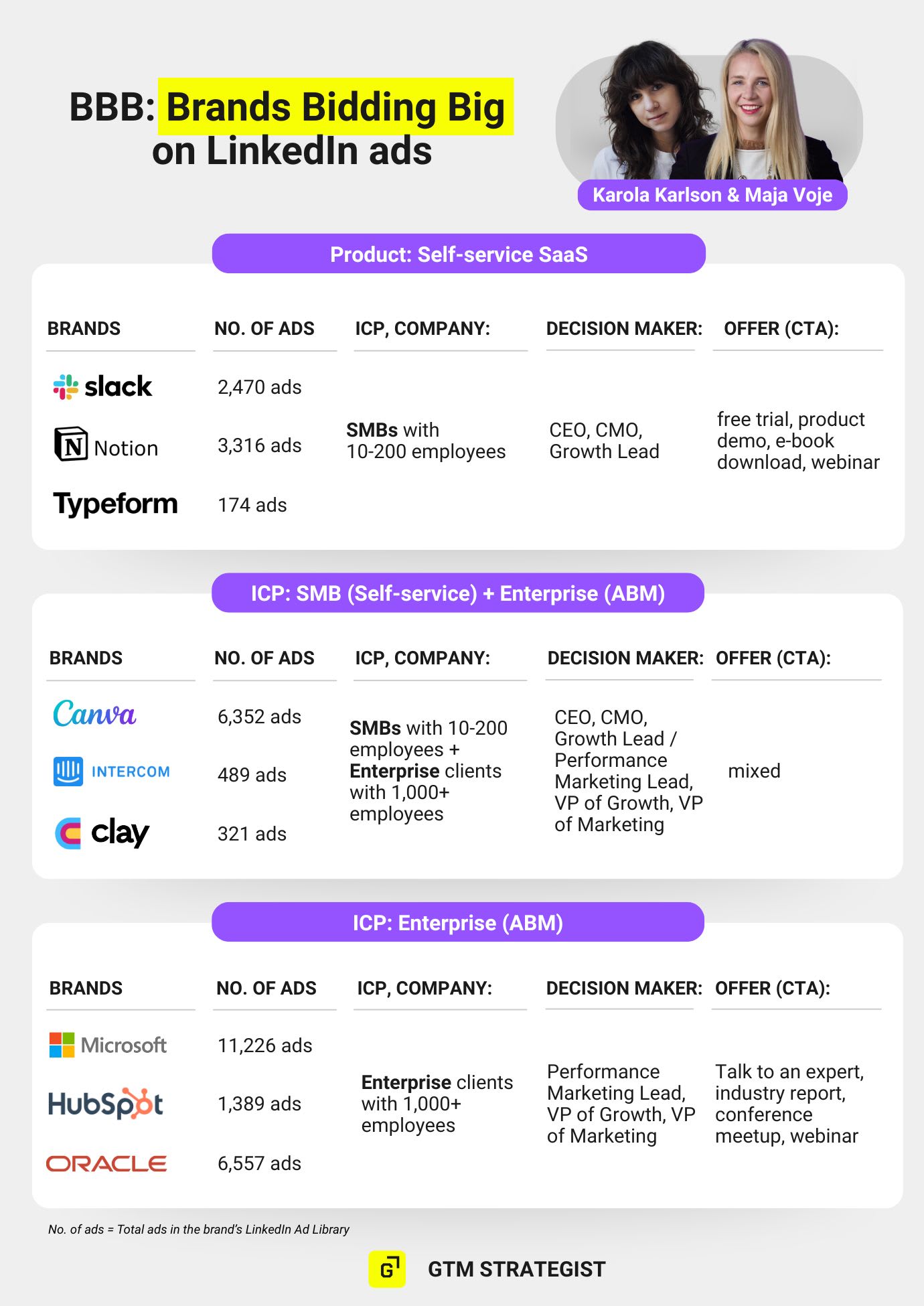







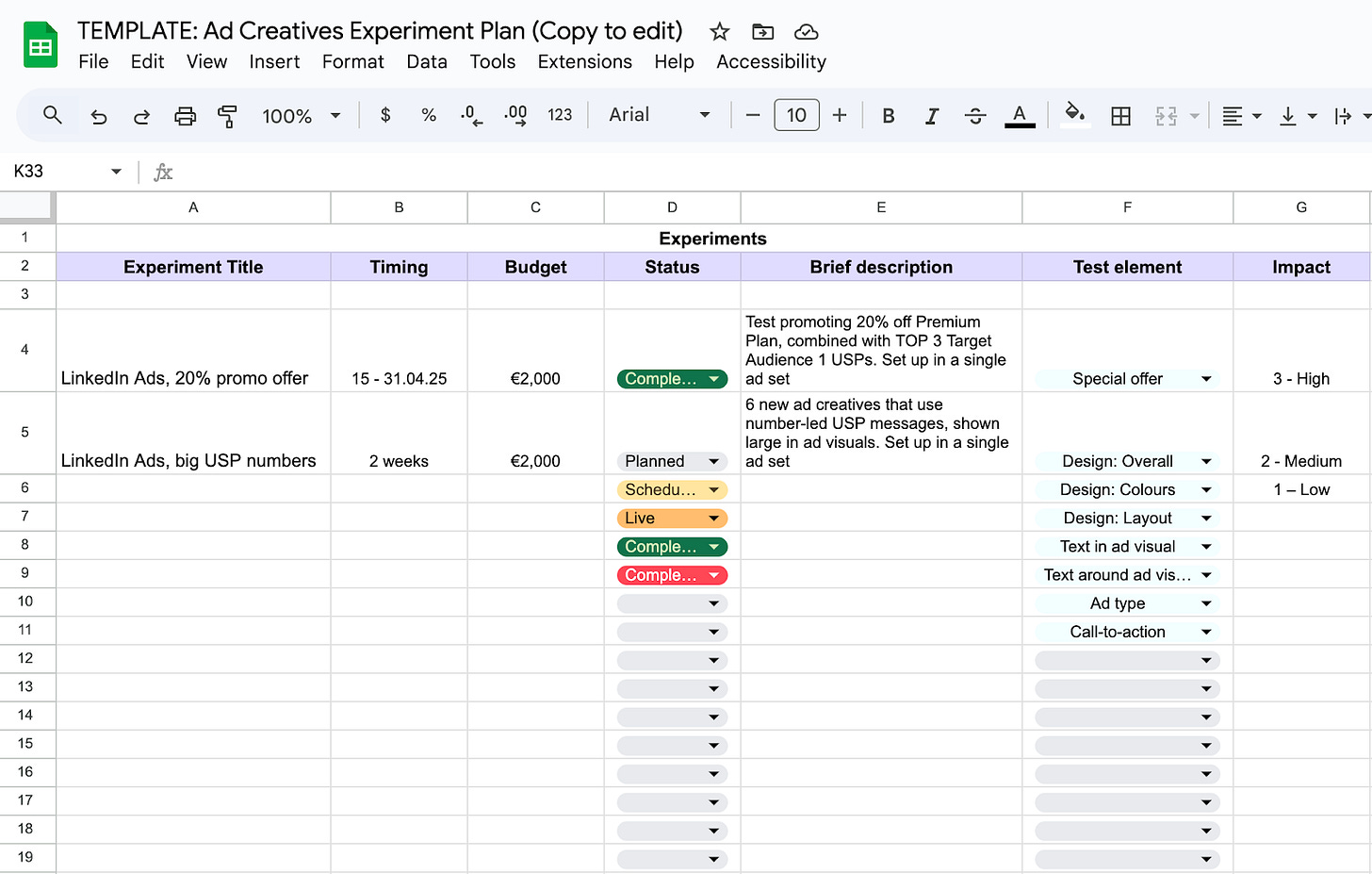


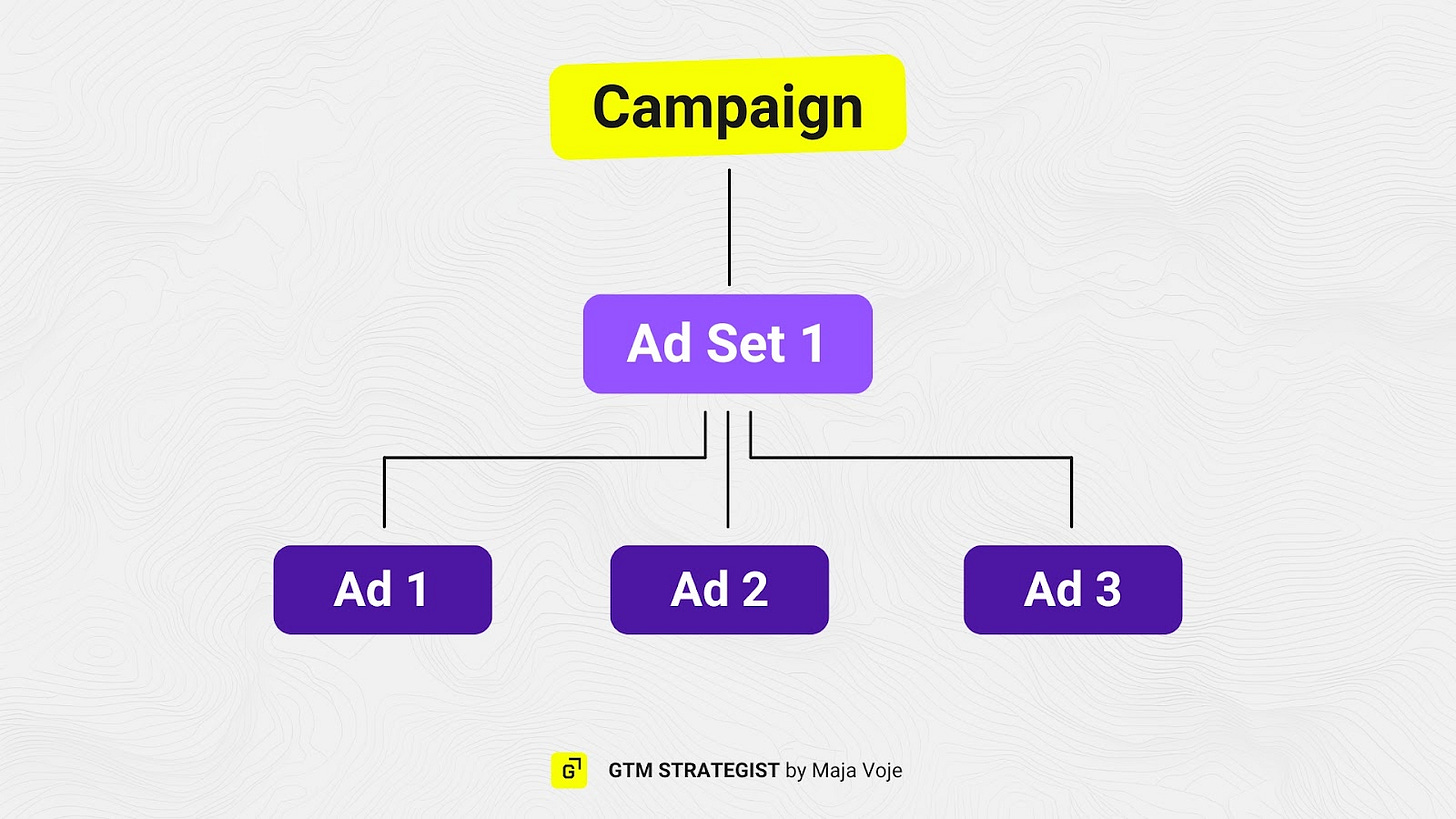
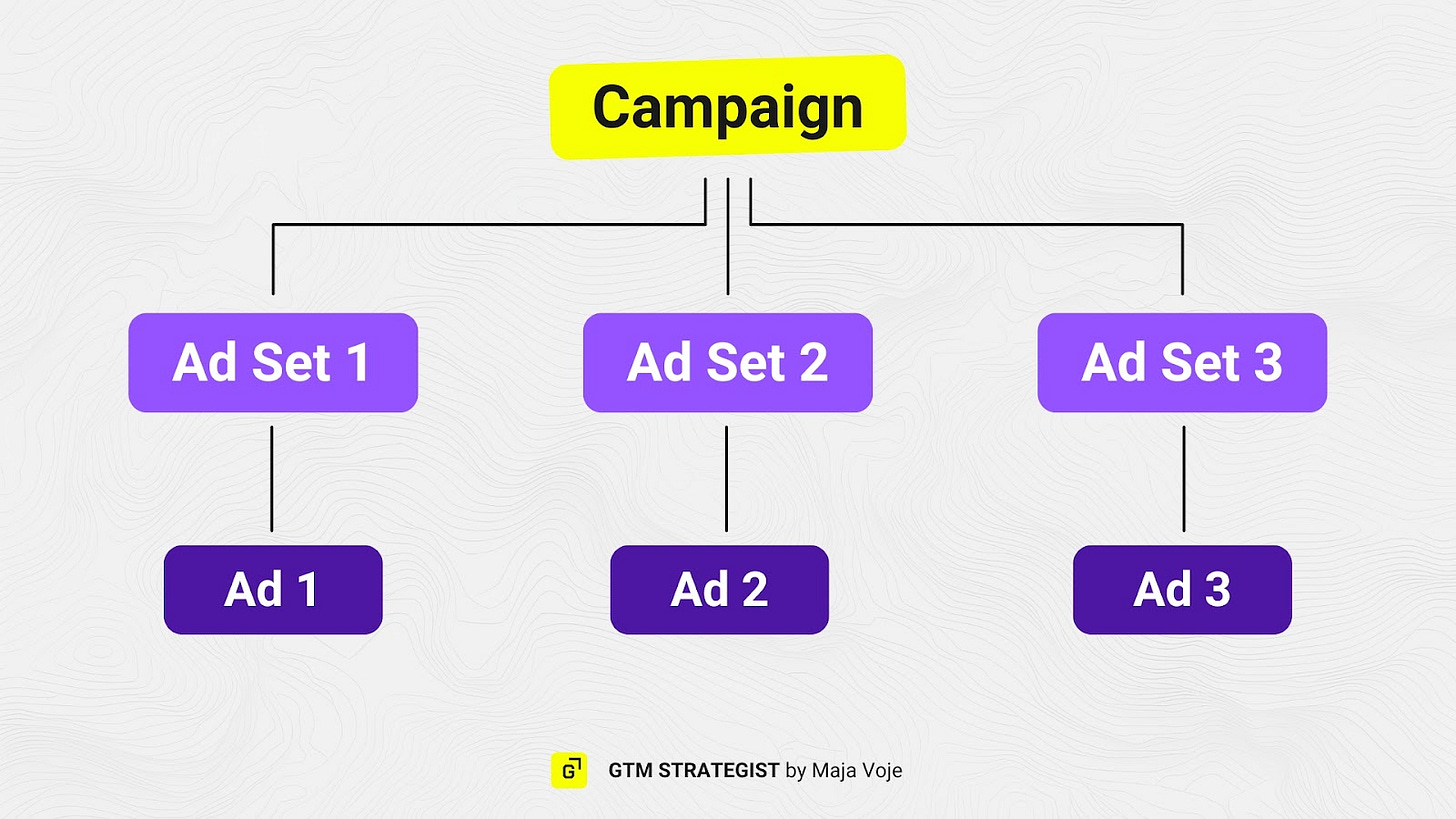





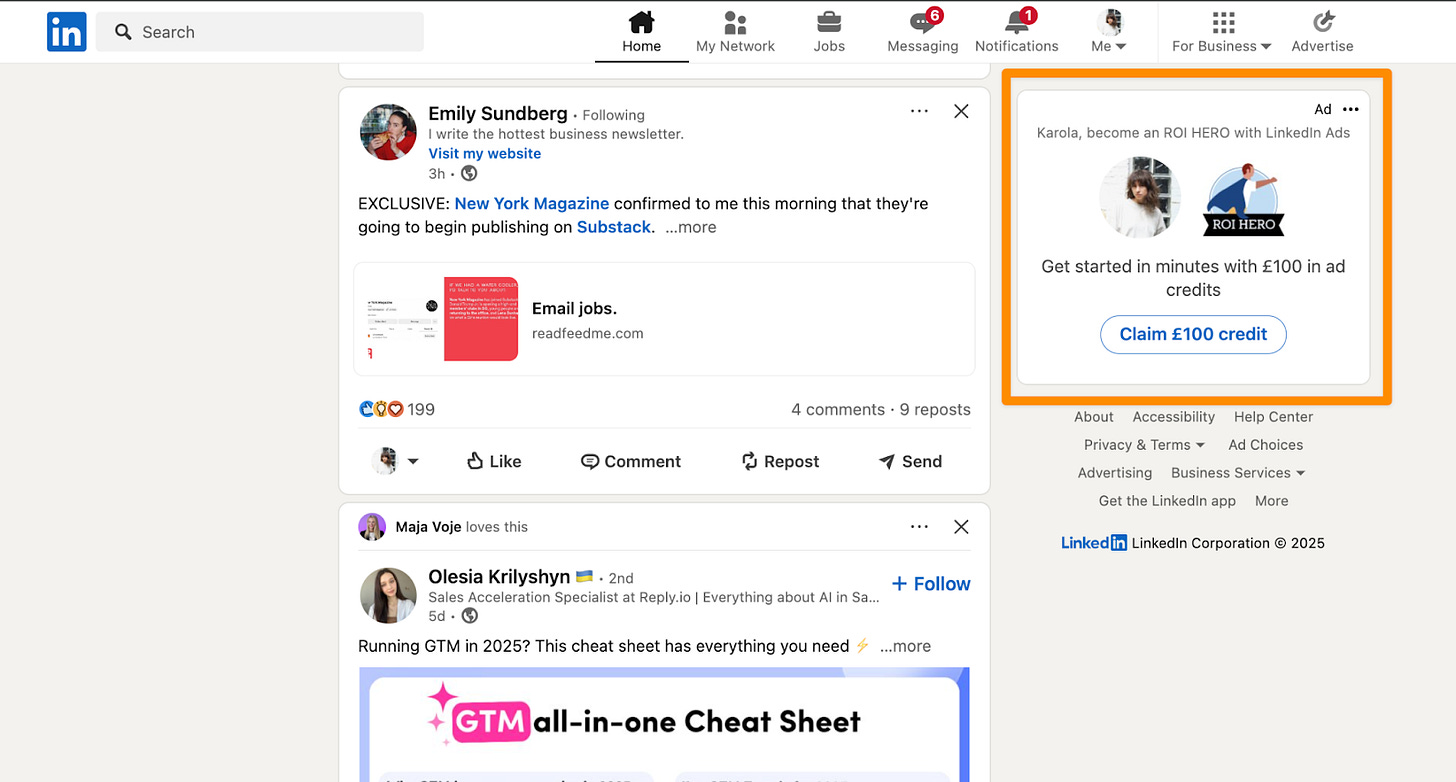

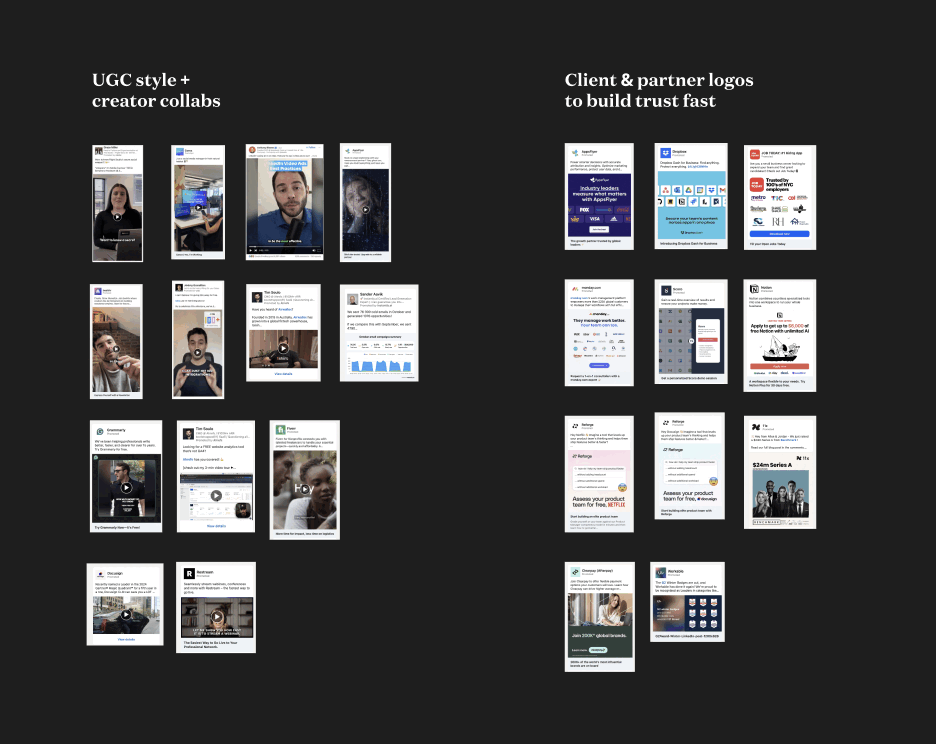






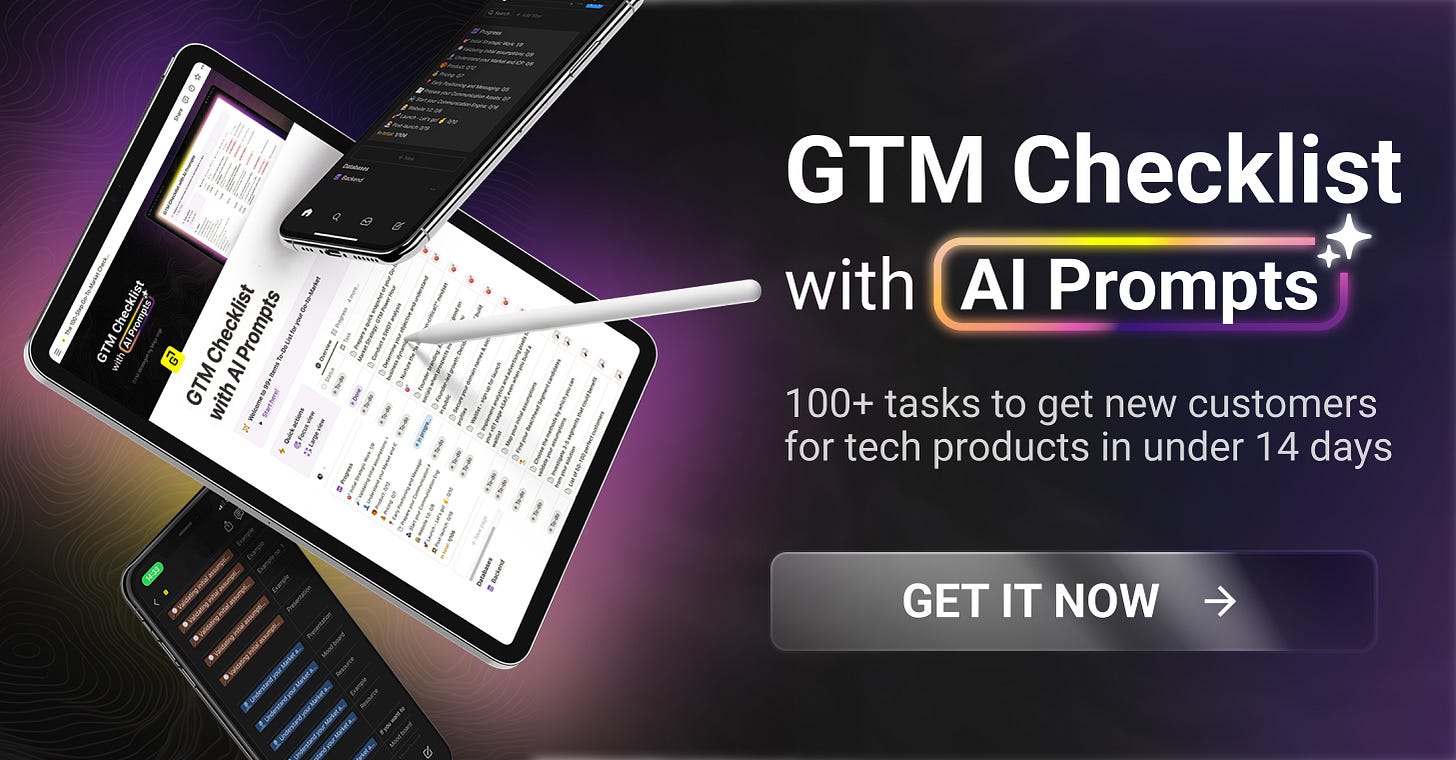

This was such a long and informative post, I absolutely loved it!!